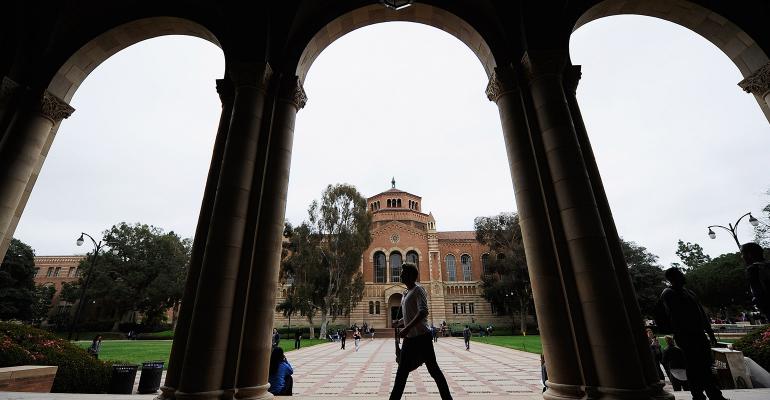It would be a mistake to assume that your affluent clients can cover the cost of college for their children.
The latest annual college pricing survey from the College Board dramatically illustrates that parents who make comfortable salaries are more likely to face challenges covering the cost of a bachelor’s degree than in previous years.
The price of college continues to outstrip inflation and the rise in income for the top 20 percent of households has slowed significantly in the past decade.
It’s going to be hard to generate much sympathy for people making a mean income of $225,279 or more a year, but this is the demographic that tends to seek out professional financial advice.
Understanding the basics of how parents with teenagers can wisely stretch their college assets is just as important as saving for college. Plus, it can help your bottom line.
I’d argue that covering the college tab can be even more stressful for some high-income parents because their children are more likely to aim for the nation’s most expensive private colleges and universities.
The cost of attendance at some of these elite institutions has reached or exceeded $70,000 a year, including Columbia, Harvard, Northwestern and Washington University in St. Louis. That is putting the price of a single bachelor’s degree at close to $300,000, which is the kind of price formally associated with medical school.
Even the most popular public research universities for affluent non-residents are reaching lofty prices for state schools including the University of California, Los Angeles ($55,160), University of Virginia ($55,784) and University of Michigan ($56,282).
Today’s College Sticker Prices
Let’s take a look at some of the higher-ed sticker prices and income figures from the College Board’s Trends in College Pricing 2016 report.
2016-2017 Tuition and Room/Board Price
Not surprisingly, private institutions cost the most, but you can see that attending a public university outside your own state significantly exceeds the in-state prices.
- Public University, In-State - $20,090
- Public University, Nonresidents - $35,370
- Private, Nonprofit University - $45,370
Over a one-year period, private colleges boosted their sticker price by 3.6 percent and state universities increased the price by the same percentage for nonresidents who pay a premium. Public universities hiked the price for their own residents by 2.7 percent.
Parental Income and College Costs
What you might find even more interesting is what has been happening to family income. In the chart using U.S. Census Bureau statistics, you can see that in the decade ending in 1995, income for the top 20 percent of Americans climbed considerably and even more so for those in the top five percent of individuals.
In the following decade, the growth in income for these top earner groups slowed appreciably and nearly collapsed in the last decade.

These sobering statistics illustrate why your clients with college-bound teenagers are likely to need guidance when they are contemplating their college costs. Furthermore, in reality, there are ways to shrink the cost of college for families who will never qualify for need-based financial aid.
Sticker Prices Are Meaningless
What your clients need to appreciate is that most families do not pay full price for college. That’s why those ubiquitous college savings calculators on financial websites can be so scary. The calculator results don’t take into account discounts via institutional grants and scholarships that your clients’ children can often qualify for.
In fact, the College Board report notes that 70 percent of college students do not pay full price for a bachelor’s degree. If you look just at private school discounting from the annual survey of the National Association of College and University Business Officers, 89 percent of students aren’t charged the sticker price. The average tuition discount that private institutions provide incoming freshmen is 54 percent.
The College Board report documented that prices dipped considerably when researchers deducted the average grants and higher-ed tax benefits that families receive. The best tax benefit to claim is the American Opportunity Tax Credit.
The average net price for tuition and room/board at private universities is $26,100 while the average net price for residents attending their own public universities is $14,210.
Many people will be surprised to learn that a vast majority of schools routinely disregard their own price tags. So, why do they do that? Because, despite all the media hype about how hard it is to get into college today, it’s a buyer’s market at most colleges. Many admission administrators worry every year that they won’t meet their freshmen enrollment goals, and most schools don’t.





